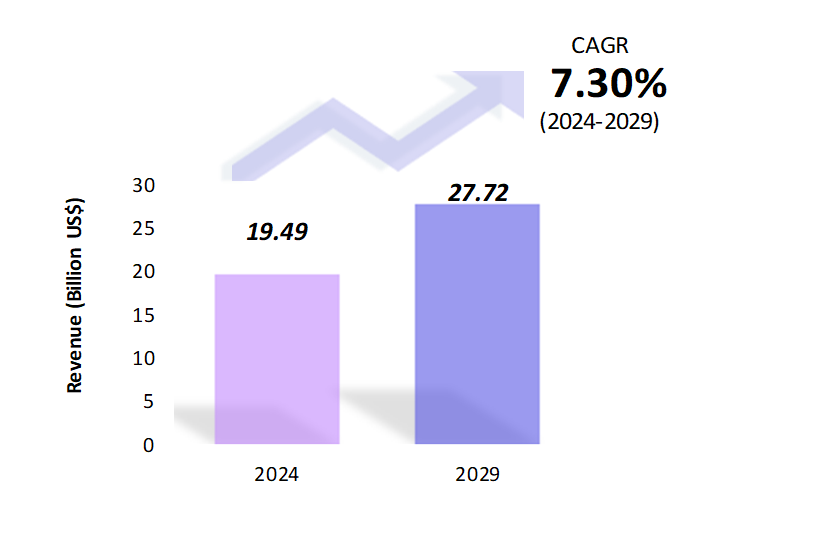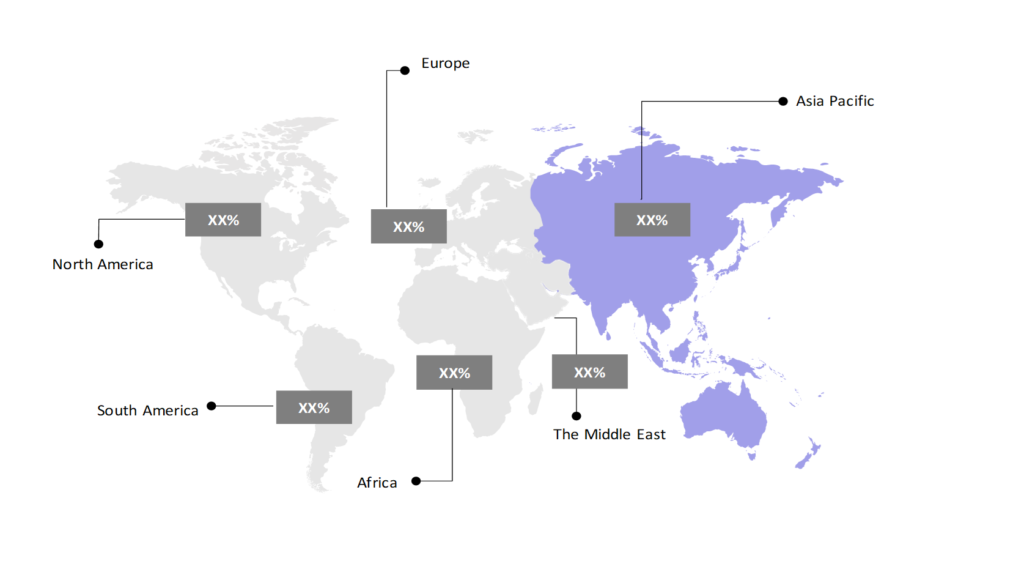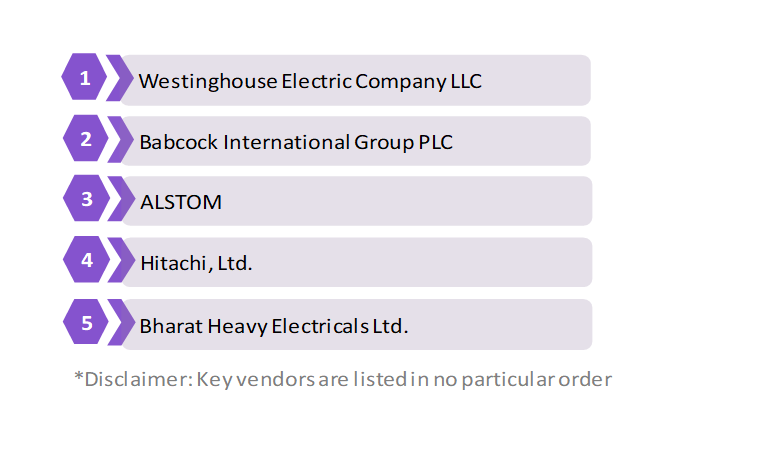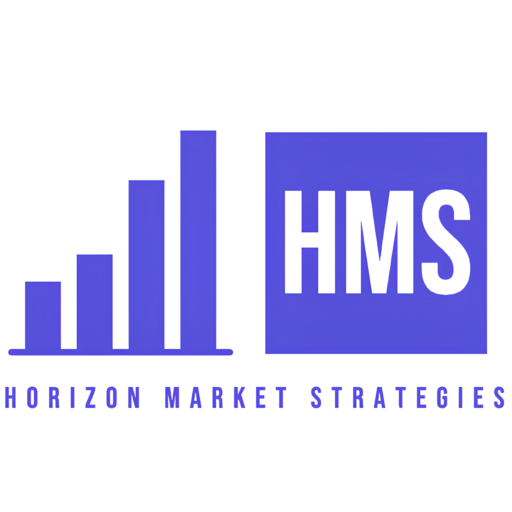Nuclear Turbine Generator Market Analysis: Growth, Size, Share & Future Trends (2024-2029)
The report covers a comprehensive analysis segmented by Type (Thermal Reactors, Fast Neutron Reactors, Nuclear Fusion Reactors), by Technology (Pressurized Water Reactors, Liquid Metal Fast Breeder Reactors, Pebble Bed Reactors, Molten Salt Reactors, Gas Cooled Reactors, Others), by Application (Nuclear Power Plants, Nuclear Propulsion, Spacecraft Propulsion, Others), by Geography (North America, South America, Asia Pacific, Europe, the Middle East, Africa).
Nuclear Turbine Generator Market Snapshot

Nuclear Turbine Generator Market Overview
The global Nuclear Turbine Generator market is estimated to be at $19.49 Bn in 2024 and is anticipated to reach $27.72 Bn in 2029. The global nuclear turbine generator market is registering a CAGR of 7.3% during the forecast period 2024-2029.
Nuclear turbine generators play a vital role in meeting the global demand for clean, safe, and dependable power. The nuclear turbine generators harness nuclear energy, generated through nuclear reactions that produce heat, which is then utilized to drive steam turbines in nuclear power stations, ultimately producing electricity. These turbine generators consist of high-pressure and low-pressure turbines connected to a generator. Steam, produced by steam generators, passes through the turbines, turning their shafts that are linked to the generator, converting mechanical energy into electrical energy.
The nuclear turbine generator market is a crucial segment of the global energy industry, primarily driven by the demand for clean, reliable, and low-carbon electricity generation. Despite facing challenges, the market continues to exhibit steady growth, fueled by technological advancements, government support, and evolving energy needs. Key market drivers include increasing concerns about climate change and the need to reduce greenhouse gas emissions, which have led many countries to prioritize the development of low-carbon energy sources like nuclear power. Additionally, nuclear energy offers energy security benefits by reducing dependence on fossil fuels and mitigating supply chain risks.
Technological innovations in reactor design, turbine efficiency, and digitalization are enhancing the performance and competitiveness of nuclear turbine generators. Advanced reactor concepts, such as small modular reactors (SMRs) and Generation IV designs, hold promise for improving safety, reducing costs, and expanding the reach of nuclear energy to new markets and applications. Government policies and incentives play a crucial role in shaping the nuclear turbine generator market, providing financial support, regulatory frameworks, and long-term planning initiatives to stimulate investment and deployment. International collaborations and partnerships further promote knowledge sharing, regulatory harmonization, and technology transfer, facilitating the global expansion of nuclear power infrastructure.
However, challenges such as high capital costs, safety concerns, regulatory hurdles, and competition from renewable energy sources remain significant barriers to market growth. Addressing these challenges requires concerted efforts from industry stakeholders, governments, and policymakers to overcome technical, regulatory, and financial obstacles and ensure the continued growth and sustainability of the nuclear turbine generator market.
Nuclear Turbine Generator Market Coverage
| Historical & Forecast Period | 2018-2029 |
| Base Year | 2023 |
| Forecast Period | 2024-2029 |
| Units | Billion US$ |
| Segments | Type, Technology, Application |
| Geographies | North America, South America, Asia Pacific, Europe, The Middle East, Africa |
| Key Vendors | Westinghouse Electric Company LLC, Babcock International Group PLC, ALSTOM, Hitachi, Ltd., Bharat Heavy Electricals Ltd. |
Key Geographies of Nuclear Turbine Generator Market, 2023

Porter’s 5 Forces Analysis of Nuclear Turbine Generator Market

Nuclear Turbine Generator Market Trends
The latest trends in the Nuclear Turbine Generator market reflect a blend of technological advancements, policy changes, and market dynamics reshaping the landscape of nuclear energy production.
There’s a growing interest in advanced reactor designs, including small modular reactors (SMRs) and Generation IV reactors. These designs offer enhanced safety features, greater flexibility, and potentially lower costs than traditional large-scale reactors. SMRs are gaining traction due to their scalability and potential for deployment in remote or distributed energy systems.
Moreover, the integration of digital technologies and automation into nuclear power plants is becoming increasingly prevalent. Advanced control systems, predictive maintenance algorithms, and digital twins are being utilized to optimize plant operations, improve safety, and reduce downtime. These technologies enhance the efficiency and reliability of nuclear turbine generators while reducing operational costs. For Instance, at the Palo Verde Nuclear Generating Station in Arizona, USA, they’ve set up fancy computer systems and smart programs to make things run smoother. These systems keep an eye on important stuff like how much power the reactor is making, the pressure of the steam, and how the coolant is flowing. This helps the people in charge to quickly fix things if needed, making sure the plant works well and stays safe.
Additionally, Hybrid energy systems that combine nuclear power with renewable energy sources are emerging as a viable option for achieving grid stability and flexibility. Integrating nuclear power with intermittent renewables such as wind and solar helps to mitigate the variability of renewable energy output, ensuring a reliable and consistent electricity supply. For Example, Hinkley Point C nuclear power station in the United Kingdom is being developed with the aim of integrating nuclear power with intermittent renewables like wind and solar. The project includes plans for a combination of nuclear reactors alongside renewable energy installations, such as wind farms and solar arrays, in the surrounding area.
Further, advancements in nuclear waste treatment and disposal technologies are aimed at minimizing environmental impact and reducing long-term storage requirements. International collaboration and standardization efforts are gaining momentum to facilitate the deployment of nuclear energy on a global scale. Initiatives such as the International Atomic Energy Agency’s (IAEA) Milestones Approach and the Nuclear Innovation Clean Energy Future (NICE Future) initiative promote knowledge sharing, regulatory harmonization, and the development of best practices to accelerate the deployment of nuclear turbine generators worldwide.
Overall, these trends underscore the continued evolution of the nuclear turbine generator market towards safer, more efficient, and more sustainable nuclear energy production. As technology progresses and global energy demands evolve, nuclear power is anticipated to have a significant impact on the transition toward a low-carbon energy future.
Nuclear Turbine Generator Market Driving Factors
The dynamics of the Nuclear Turbine Generator market are shaped by various key driving factors. Among these, nuclear power provides a stable and reliable source of electricity, reducing dependence on volatile fuel markets and enhancing energy security. As countries seek to diversify their energy mix and reduce reliance on fossil fuels, nuclear energy offers a consistent and dependable power generation option.
Moreover, with increasing concerns about climate change and carbon emissions, nuclear power is recognized as a low-carbon alternative to traditional fossil fuels. Governments and policymakers worldwide are implementing policies and incentives to promote nuclear energy as part of their strategies to reduce greenhouse gas emissions and achieve climate targets. Ongoing advancements in nuclear reactor and turbine technology are driving efficiency improvements and cost reductions in nuclear power generation. For instance, France has been involved in the development of next-generation reactor designs, such as the European Pressurized Reactor (EPR), which aims to enhance safety features and improve overall efficiency.
Innovations such as small modular reactors (SMRs), advanced materials, and digitalization are enhancing the performance and competitiveness of nuclear turbine generators. Development of small modular reactors (SMRs) by NuScale Power in the United States. NuScale Power has been at the forefront of advancing SMR technology, which involves smaller and more flexible nuclear reactor designs compared to traditional large-scale reactors. Their SMR design features small reactor modules that can be manufactured in factories and then transported to site for assembly. This modular approach offers several advantages, including reduced construction time and costs, enhanced safety features, and scalability to meet varying energy demands. On this note, in 2020, NuScale Power’s SMR design became the first to receive approval from the U.S. Nuclear Regulatory Commission (NRC), marking a significant milestone for the advancement of SMR technology.
Also, supportive government policies, including subsidies, incentives, and regulatory frameworks, play a crucial role in driving investment and growth in the nuclear turbine generator market. Governments provide financial support, streamline regulatory processes, and establish long-term energy plans to encourage the development and deployment of nuclear power infrastructure.
These driving factors collectively contribute to the growth and expansion of the nuclear turbine generator market, positioning nuclear energy as a vital component of the global energy transition towards a more sustainable and secure future.
Nuclear Turbine Generator Market Challenges
The Nuclear Turbine Generator market faces several challenges that impact its growth and development.
Nuclear power plants require significant upfront capital investment for construction, licensing, and regulatory compliance. These high initial costs can deter investors and limit the deployment of nuclear turbine generators, particularly in regions with limited financial resources or uncertain market conditions. For instance, the case of the V.C. Summer Nuclear Station in South Carolina, USA. The V.C. Summer Nuclear Station was a project initiated by utility companies South Carolina Electric & Gas (SCE&G) and Santee Cooper. The project aimed to construct two new nuclear reactors, Units 2 and 3, at the existing V.C. Summer site. But the project ran into serious delays and cost overruns, which finally caused it to be abandoned in 2017. The primary reasons for the project’s failure was the escalating construction costs and financing challenges. The initial cost estimate for the project was around $9 billion, but by 2017, the estimated cost had ballooned to over $25 billion. These escalating costs were attributed to a variety of factors, including construction delays, regulatory hurdles, and engineering challenges.
Moreover, Safety considerations and stringent regulatory requirements pose challenges for the nuclear industry. High-profile accidents, such as Chornobyl and Fukushima, have raised public concerns about nuclear safety, leading to increased regulatory scrutiny and permitting delays. Addressing safety concerns and navigating complex regulatory frameworks are key challenges for nuclear turbine generator projects. For example, the case of the Vogtle Electric Generating Plant in Georgia, USA operated by Georgia Power, is undergoing the construction of two new nuclear reactors, Units 3 and 4. This project, known as the Vogtle expansion, faced numerous challenges related to safety considerations and regulatory requirements.
Also, the development and construction of nuclear power plants involve long project lead times, often spanning several years or even decades. Delays in licensing, permitting, and construction can prolong project timelines and increase costs, impacting the economics of nuclear turbine generator projects and discouraging investment.
Furthermore, the growing competitiveness of renewable energy sources, such as wind and solar power, poses a challenge to the nuclear turbine generator market. Decreasing expenses and governmental encouragement for renewable energy sources have heightened rivalry, especially in areas rich in renewable energy potential. Nuclear power plants also produce radioactive waste that requires safe storage and disposal.
Addressing the challenges of nuclear waste management and decommissioning retired nuclear facilities requires long-term planning, technical expertise, and financial resources. Mitigating these challenges requires concerted efforts from industry stakeholders, governments, and policymakers to address safety concerns, streamline regulatory processes, improve cost competitiveness, and promote innovation in nuclear turbine generator technology.
Nuclear Turbine Generator Market – Key Industry News
- In February 2024, the government of India decided to expand renewable energy capacity to reduce reliance on fossil fuels, aiming to meet 50% of electricity needs from renewable sources by 2030. Plans include increasing nuclear power capacity to achieve net-zero emissions by 2070.
- In February 2024, Westinghouse Electric and Community Nuclear Power (CNP), has agreed to construct a set of four small modular nuclear reactors (SMRs) in Teesside.
- In April 2024, Equinix signed a pre-agreement with small nuclear reactor firm Oklo to procure up to 500MW of nuclear energy. It is the first SMR deal signed by a colocation data center company.
Nuclear Turbine Generator Market Competitive Landscape
The participants in the global Nuclear Turbine Generator market are always developing their strategies to preserve a competitive advantage. Several entities in the nuclear turbine generator market include Westinghouse Electric Company LLC, Babcock International Group PLC, ALSTOM, Hitachi, Ltd., Bharat Heavy Electricals Ltd., and others. Collaborations and partnerships between nuclear power plant developers and turbine generator manufacturers further intensify competition, as companies aim to leverage combined strengths and resources to secure contracts for upcoming projects.
Regulatory frameworks and government policies also significantly impact the competitive landscape, with stringent safety and environmental regulations shaping market dynamics. Furthermore, advancements in alternative energy sources, such as renewables, pose a competitive challenge to the nuclear turbine generator market, prompting companies to innovate and adapt to changing market preferences.
Overall, the competitive landscape of the global nuclear turbine generator market is characterized by a blend of established giants, ambitious newcomers, regulatory influences, and technological advancements, driving continuous innovation and evolution in the market.
Nuclear Turbine Generator Market Company Share Analysis, 2023 (%)

Nuclear Turbine Generator Market – Key Companies

Reason to Buy from us

Table of Contents
| 1. Introduction |
|---|
| 1.1. Research Methodology |
| 1.2. Scope of the Study |
| 2. Market Overview / Executive Summary |
| 2.1. Global Nuclear Turbine Generator Market (2018 – 2022) |
| 2.2. Global Nuclear Turbine Generator Market (2023 – 2029) |
| 3. Market Segmentation |
| 3.1. Global Nuclear Turbine Generator Market by Type |
| 3.1.1. Thermal Reactors |
| 3.1.2. Fast Neutron Reactors |
| 3.1.3. Nuclear Fusion Reactors |
| 3.2. Global Nuclear Turbine Generator Market by Technology |
| 3.2.1. Pressurized Water Reactors |
| 3.2.2. Liquid Metal Fast Breeder Reactor |
| 3.2.3. Pebble Bed Reactors |
| 3.2.4. Molten Salt Reactors |
| 3.2.5. Gas Cooled Reactor |
| 3.2.6. Others |
| 3.3. Global Nuclear Turbine Generator Market by Application |
| 3.3.1. Nuclear Power Plants |
| 3.3.2. Nuclear Propulsion |
| 3.3.3. Spacecraft Propulsion |
| 3.3.4. Others |
| 4. Regional Segmentation |
| 4.1. North America |
| 4.1.1. The U.S |
| 4.1.2. Canada |
| 4.1.3. Mexico |
| 4.2. South America |
| 4.2.1. Brazil |
| 4.2.2. Argentina |
| 4.2.3. Colombia |
| 4.2.4. Chile |
| 4.2.5. Rest of South America |
| 4.3. Asia Pacific |
| 4.3.1. China |
| 4.3.2. India |
| 4.3.3. Japan |
| 4.3.4. South Korea |
| 4.3.5. Rest of Asia Pacific |
| 4.4. Europe |
| 4.4.1. UK |
| 4.4.2. Germany |
| 4.4.3. Italy |
| 4.4.4. France |
| 4.4.5. Spain |
| 4.4.6. Rest of Europe |
| 4.5. The Middle East |
| 4.5.1. Turkey |
| 4.5.2. UAE |
| 4.5.3. Saudi Arabia |
| 4.5.4. Rest of the Middle East |
| 4.6. Africa |
| 4.6.1. Egypt |
| 4.6.2. South Africa |
| 4.6.3. Rest of Africa |
| 5. Value Chain Analysis of the Global Nuclear Turbine Generator Market |
| 6. Porter Five Forces Analysis |
| 6.1. Threats of New Entrants |
| 6.2. Threats of Substitutes |
| 6.3. Bargaining Power of Buyers |
| 6.4. Bargaining Power of Suppliers |
| 6.5. Competition in the Industry |
| 7. Trends, Drivers and Challenges Analysis |
| 7.1. Market Trends |
| 7.1.1. Market Trend 1 |
| 7.1.2. Market Trend 2 |
| 7.1.3. Market Trend 3 |
| 7.1.4. Market Trend 4 |
| 7.1.5. Market Trend 5 |
| 7.2. Market Drivers |
| 7.2.1. Market Driver 1 |
| 7.2.2. Market Driver 2 |
| 7.2.3. Market Driver 3 |
| 7.2.4. Market Driver 4 |
| 7.2.5. Market Driver 5 |
| 7.3. Market Challenges |
| 7.3.1. Market Challenge 1 |
| 7.3.2. Market Challenge 2 |
| 7.3.3. Market Challenge 3 |
| 7.3.4. Market Challenge 4 |
| 7.3.5. Market Challenge 5 |
| 8. Regulatory Landscape |
| 9. Competitive Landscape |
| 9.1. Westinghouse Electric Company LLC |
| 9.2. Babcock International Group PLC |
| 9.3. ALSTOM |
| 9.4. Hitachi, Ltd. |
| 9.5. Bharat Heavy Electricals Ltd. |
| 9.6. Company 6 |
| 9.7. Company 7 |
| 9.8. Company 8 |
| 9.9. Company 9 |
| 9.10. Company 10 |
Nuclear Turbine Generator Market – Frequently Asked Questions (FAQs)
What is the current size of the global nuclear turbine generator market?
The market size for the global nuclear turbine generator market in 2024 is $19.49 Bn.
Who are the major vendors in the global nuclear turbine generator market?
The major vendors in the global nuclear turbine generator market are Westinghouse Electric Company LLC, Babcock International Group PLC, ALSTOM, Hitachi, Ltd., and Bharat Heavy Electricals Ltd.
Which segments are covered under the global nuclear turbine generator market segments analysis?
This report offers in-depth insights into each type, technology, and application.
